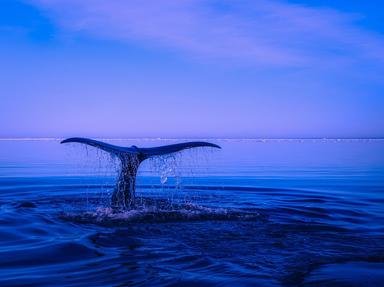Quiz Answer Key and Fun Facts
1. The Independent State of Samoa has a central location in the Pacific Ocean, which meant the early days of habitation (which is thought to have started around 1500 BCE, although Samoan oral history only dates from around 1000 CE) involved interaction with a number of nearby island groups. With which of these did Samoans NOT have significant interaction in terms of migration, trade and battles for regional supremacy?
2. The first European to record the Samoan islands was the Dutch sailor Jacob Roggeveen, in 1722. However, it was Louis-Antoine de Bougainville who gave them the name by which they became known, the Navigator Islands, in 1768. What nationality was this Pacific explorer, de Bougainville?
3. During the 19th century, European colonization and exploitation of the resources of Pacific islands proceeded apace. What nation established a significant presence on the island of Upolu, having control of large plantations for coconut and cacao?
4. One of Samoa's most famous European residents arrived in 1889, and lived there until his death in 1894. This picture was taken at his burial on Mt Vaea, at a spot overlooking his house near the village of Vailima. Although he is better known for creating one of the archetypical pirate tales, what Scottish author wrote 'A Footnote to History', describing the political events of the turbulent period from 1882 to 1892?
5. The First Samoan Civil War (1886-1894) was caused by rivalry between different Samoan tribal groups for supremacy, each group supported by a different colonial power. All three colonial powers sent warships to the harbour of Apia, and serious battle seemed imminent. What happened on 15th March 1889 to end the threat of war?
6. Following the First Samoan Civil War (1886-1894), civil unrest continued in the Samoan kingdom, with the Second Samoan Civil War between Prince Tanu and the rebel forces of Mata'afa Iosefo engaged in the Siege of Apia in March of 1899. British and American forces supported the Prince, who was victorious, but the Battle of Vailele on 1st April was a victory for the rebels. The European powers decided it was time to stop squabbling, and signed a treaty to establish spheres of influence in the archipelago. Which islands were placed under control of the Germans?
7. During World War I, German Samoa was occupied by forces from which Commonwealth country?
8. The move for Samoan independence began shortly after the Tripartite Convention made colonial status official. The Mau, a non-violent group whose motto was Samoa for Samoans, held frequent demonstrations calling for self-rule. In what year (part of a turbulent decade for many colonial powers) did former German Samoa gain independence from its post-WWI colonial rulers?
9. In 1997, the Samoan constitution was amended so that country's name was officially changed from Western Samoa to just plain old Samoa. Did the nation's flag change at that time?
10. The day 30th December 2011 was not observed in Samoan calendars, because the International Date Line was moved. Why did Samoans organize this change?
Source: Author
looney_tunes
This quiz was reviewed by FunTrivia editor
bloomsby before going online.
Any errors found in FunTrivia content are routinely corrected through our feedback system.

